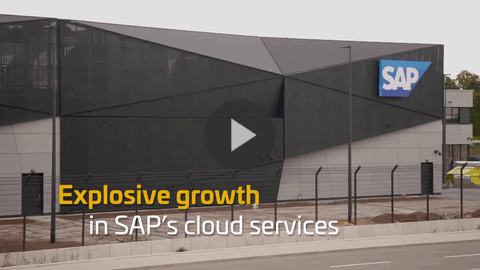(Note: The following has been submitted as a guest post to CommScope Blogs by Christian Roth, structured cabling architect, Database and Data Management, SAP. Opinions and comments provided in this guest post, as with all posts to CommScope Blogs, are that of the author and do not necessarily reflect the views of CommScope.)
 Many of the traditional business models were born from the industrial economy. Automotive manufacturing is a great example of what used to be the norm. Can you imagine having just one interaction with your car dealer – the day the salesperson hands you your keys? Our grandparents would have seen this as the status quo, but to stay relevant in the 21st century, vehicle manufacturers are prioritizing the driver experience – before, during, and after purchase.
Many of the traditional business models were born from the industrial economy. Automotive manufacturing is a great example of what used to be the norm. Can you imagine having just one interaction with your car dealer – the day the salesperson hands you your keys? Our grandparents would have seen this as the status quo, but to stay relevant in the 21st century, vehicle manufacturers are prioritizing the driver experience – before, during, and after purchase.
CLICK TO TWEET: SAP's Christian Roth explains how high-volume, high-speed, in-memory computing will most likely sit in the cloud.
Today’s consumers are in the driver’s seat
Experiences are king, according to McKinsey. Consumers of all ages are opting for experiences, with millennials leading the charge. Brands that evolve with the experience-centric economy will continue to thrive as the experience market is set to reach 8.2 trillion dollars by 2028.
Volvo’s vision is to create a first-class experience for travel. The Volvo 360c is a sample prototype of our automotive future. With no steering wheel or pedals, the vehicle transforms into a usable office or lounge that drives itself. Although this scenario may take years before becoming a reality, it shows how brands are reinventing how they serve customers at every touchpoint. Whether it be through a virtual showroom or via voice assistants who control heating systems remotely, the focus is connecting with customers in new ways.
Despite being nearly 90 years old, the toy manufacturer Lego is doing just that. Lego goes beyond traditional channels to create a connection and brand affinity with its in-store experience and digital engagement. Children can interact, upload creations, and connect with others via the LEGO life app, which has been downloaded more than 6 million times.
Driving customer value through intelligent data
Just as many industries benefited from the formula of the industrial economy, many can reap rewards in the experience economy by capturing and analyzing data in real time to enhance the customer experience, according to SAP’s recent Forbes article.
Our digital footprint shows what we listen to, where we like to eat, our favorite driving routes, and more. With so much connectivity, companies are analyzing data to enhance the driving experience. It’s not surprising that Audi, Mercedes-Benz, Tesla, Toyota, and Volvo have all signed up to work with Nvidia DriveAR, powered by machine learning.
In a world where experiences matter most, the only way for companies to thrive is with embedded intelligence. This means monitoring every interaction people experience with a company in order to spot opportunities for improvement.
Behind the scenes of an intelligent enterprise
As businesses look to develop superior customer experiences, they will build real-time applications for the Internet of Things and machine-to-machine communications. This high-volume, high-speed, in-memory computing will most likely sit in the cloud.
Considering SAP is the fastest growing cloud company at scale in the enterprise software applications industry, we are investing in networks which are faster, more ubiquitous, more reliable, and secure. Check out the video below for a behind-the-scenes look at how SAP is powering the experience economy.

We’d love to continue the conversation during Datacloud Global Congress on June 4-6.
We hope to see you there!










